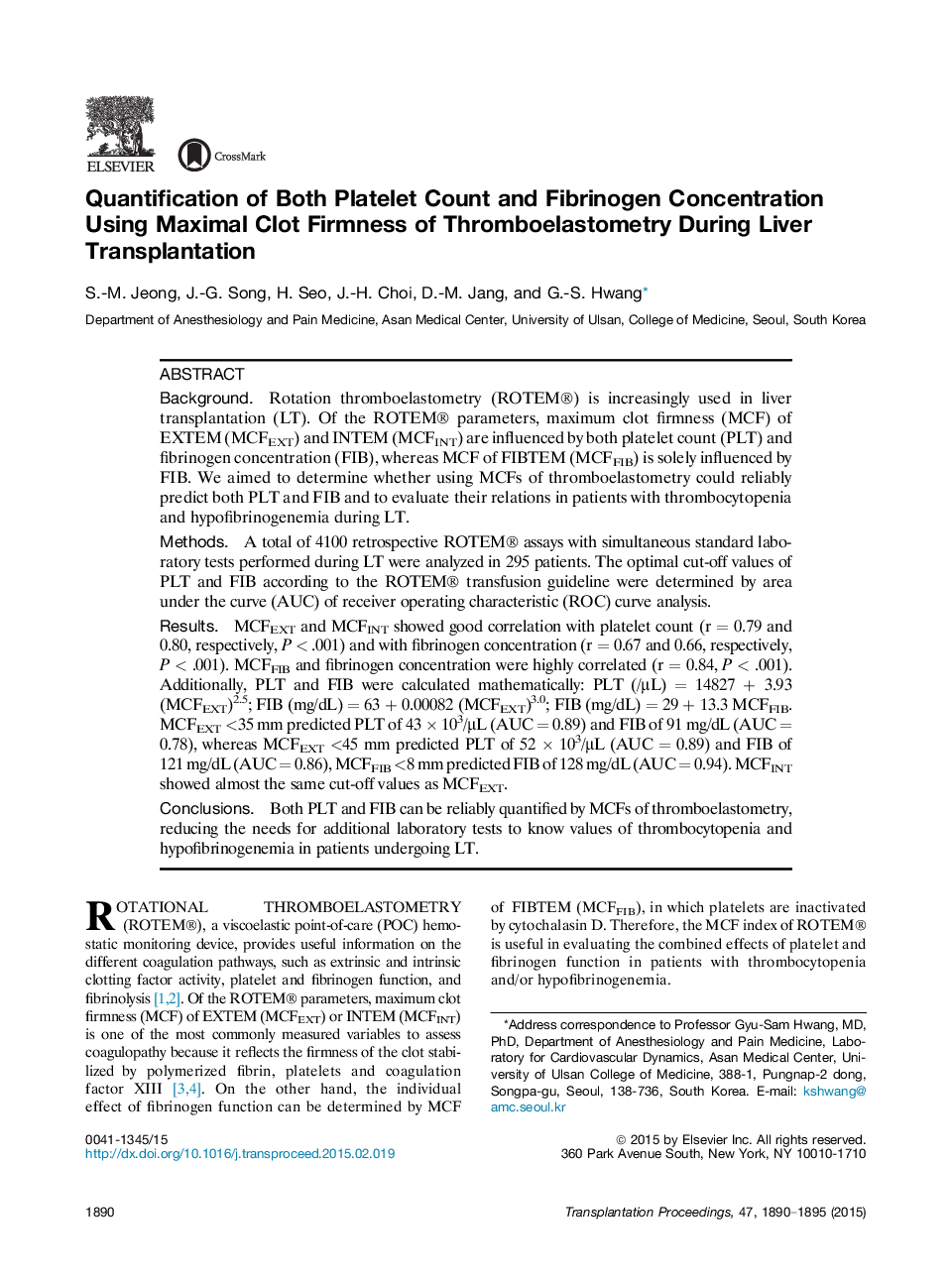| Article ID | Journal | Published Year | Pages | File Type |
|---|---|---|---|---|
| 6247231 | Transplantation Proceedings | 2015 | 6 Pages |
BackgroundRotation thromboelastometry (ROTEM®) is increasingly used in liver transplantation (LT). Of the ROTEM® parameters, maximum clot firmness (MCF) of EXTEM (MCFEXT) and INTEM (MCFINT) are influenced by both platelet count (PLT) and fibrinogen concentration (FIB), whereas MCF of FIBTEM (MCFFIB) is solely influenced by FIB. We aimed to determine whether using MCFs of thromboelastometry could reliably predict both PLT and FIB and to evaluate their relations in patients with thrombocytopenia and hypofibrinogenemia during LT.MethodsA total of 4100 retrospective ROTEM® assays with simultaneous standard laboratory tests performed during LT were analyzed in 295 patients. The optimal cut-off values of PLT and FIB according to the ROTEM® transfusion guideline were determined by area under the curve (AUC) of receiver operating characteristic (ROC) curve analysis.ResultsMCFEXT and MCFINT showed good correlation with platelet count (r = 0.79 and 0.80, respectively, P < .001) and with fibrinogen concentration (r = 0.67 and 0.66, respectively, P < .001). MCFFIB and fibrinogen concentration were highly correlated (r = 0.84, P < .001). Additionally, PLT and FIB were calculated mathematically: PLT (/μL) = 14827 + 3.93 (MCFEXT)2.5; FIB (mg/dL) = 63 + 0.00082 (MCFEXT)3.0; FIB (mg/dL) = 29 + 13.3 MCFFIB. MCFEXT <35 mm predicted PLT of 43 à 103/μL (AUC = 0.89) and FIB of 91 mg/dL (AUC = 0.78), whereas MCFEXT <45 mm predicted PLT of 52 à 103/μL (AUC = 0.89) and FIB of 121 mg/dL (AUC = 0.86), MCFFIB <8 mm predicted FIB of 128 mg/dL (AUC = 0.94). MCFINT showed almost the same cut-off values as MCFEXT.ConclusionsBoth PLT and FIB can be reliably quantified by MCFs of thromboelastometry, reducing the needs for additional laboratory tests to know values of thrombocytopenia and hypofibrinogenemia in patients undergoing LT.
